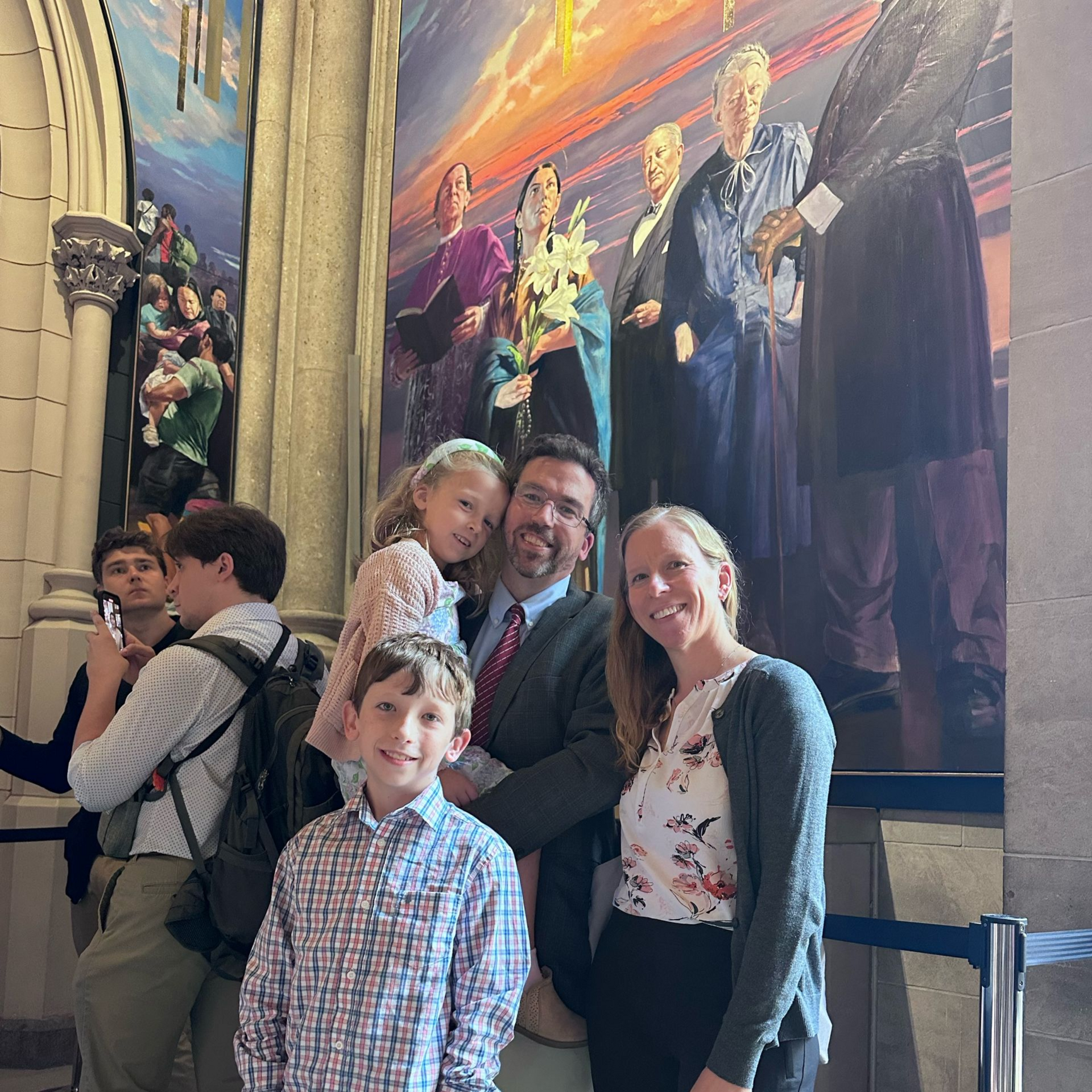Canonization: What comes next?
Dear friends,
Hello, and Advent greetings from the Dorothy Day Guild! You might know that we received a really important canonization update last month: the Dicastery for the Causes of Saints in Rome appointed Monsignor Maurizio Tagliaferri as the relator for Dorothy’s cause! Our Guild steering committee, George Horton, Deirdre Cornell, and Dr. Kevin Ahern, met with our postulator, Dr. Waldery Hilgeman, at the beginning of November, when he shared this news. This was a great gift for Dorothy’s birthday on November 8th and her anniversary of death on November 29th! All of us here at the Guild are thrilled with this development, and we wanted to take this opportunity to explain what happens at this stage of the canonization process and outline the next steps towards sainthood for our members.
Anniversary of Dorothy’s death:
First, however, we had such a nice time celebrating Dorothy’s forty-third anniversary of death last week and hearing about the many commemorations large and small that took place in parishes and Catholic Worker houses around the United States. We were excited to see a reflection on Dorothy at the morning prayer service at St. Paschal Baylon school and parish in Highland Heights, Ohio on November 29th, which takes place from 12:37-18:57 in their livestream. These little moments of prayer and catechesis are amazing opportunities to share Dorothy’s legacy, especially for those of you who work with young people. If you organize a similar liturgy, service event, or use Dorothy’s story in a lesson plan for a theology, CCD, or RCIA class, please don’t hesitate to contact us and request free prayer cards and other materials you can share with your group.
The Guild co-sponsored a mass for the Abolition of Nuclear Weapons at the Church of Our Savior in New York City on Dorothy’s anniversary. We were so grateful that Archbishop John Wester of Santa Fe was able to join us and offer a homily, “The Third Way Towards Nuclear Weapons Abolition,” in conjunction with the Second Meeting of the State Parties to the Treaty on the Prohibition of Nuclear Weapons. On the 78th anniversary of the bombing of Hiroshima and Nagasaki, Archbishop Wester visited Japan as part of a peace pilgrimage, which we wrote about
over the summer.
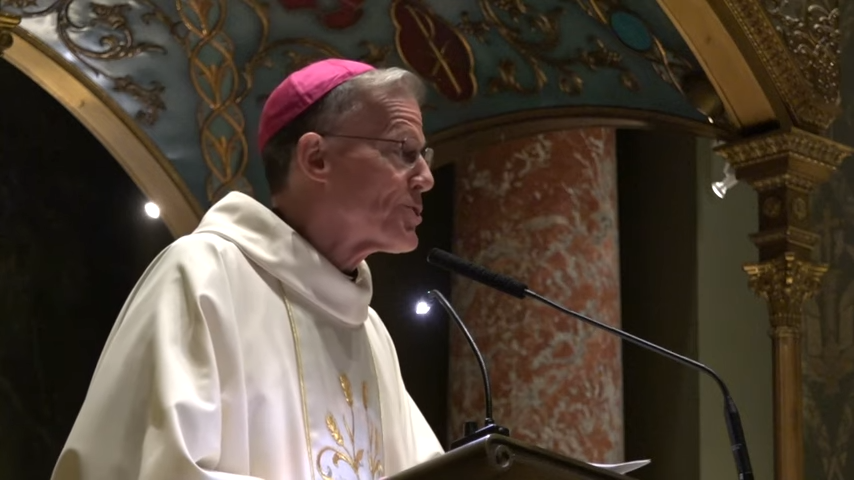
In his remarks last week, Archbishop Wester reminded us that “In 1965, at the height of the Cold War, Dorothy Day denounced the ‘idea of arms being used as deterrents, to establish a balance of terror.’ She supported the Second Vatican Council when it taught that nuclear warfare was incompatible with the then-Catholic theory of just war.” Our understanding of that incompatibility has only grown in recent years. His Excellency continued, “I repeat, nuclear war is a crime against God, man, woman and all living things. And now Pope Francis has moved us radically even beyond that, declaring that the mere possession of nuclear weapons is deeply immoral.” Archbishop Wester’s full homily is available
on YouTube and he has graciously provided us with
his text and
the statement signed December 1st by leaders of four dioceses in the United States and Japan in support of the abolition of nuclear weapons. Earlier this week, the National Catholic Reporter published
“Nuclear disarmament a ‘critical pro-life issue,’ warns Archbishop Wester,” by Steven Schwankert, which provides a succinct timeline of Archbishop Wester’s remarks and the movement for nuclear disarmament’s history. Enormous thanks from all of us at the Dorothy Day Guild go out to those who helped organize this timely and meaningful celebration and to all of you who continue this necessary work in defense of life. Please join us in continuing to ask Dorothy’s intercession as we work to rid the world of nuclear weapons!
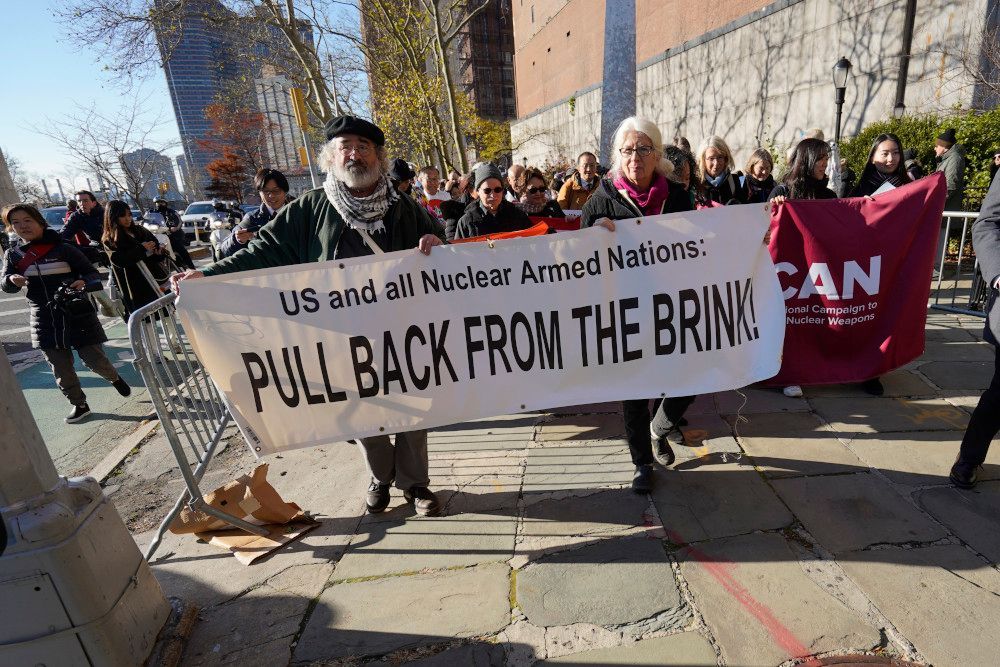
New articles:
We have really appreciated the various articles and reflections on Dorothy that were published over the course of November and wanted to direct your attention to two that came out right on and just before her anniversary. Give Us This Day's daily reflection for November 29th featured Dorothy, as did Aleteia on November 28th, in “Dorothy’s last public appearance was at a Eucharistic Congress.” It’s been great to see the way that Dorothy’s witness has inspired new conversations about the Blessed Sacrament during the United States’ Eucharistic revival! As the article notes, the last Eucharistic Congress in the US took place in Philadelphia, and Dorothy was scheduled to speak on August 6th, the anniversary of the US bombing of Hiroshima. Dorothy used her remarks to remind her audience of the significance of that anniversary and point out that “Our Creator gave us life, and the Eucharist to sustain our life. But we have the world instruments of death of inconceivable magnitude.” A military mass was scheduled for the same day, to which Dorothy remarked that those in charge of planning liturgies had neglected the overwhelming destruction of nuclear war. Dorothy suggested that the most appropriate way to approach the celebration of Eucharist on this day was to ‘regard that military Mass, and all our Masses today, as an act of penance, begging God to forgive us.'”
We know that several other good pieces were published in Catholic media last month, including a reflection on Dorothy’s birthday in Magnificat, so if you find any that we missed, please send them our way!
Steps Towards Sainthood:
Learning that Monsignor Tagliaferri had been appointed by the Dicastery to work on Dorothy’s cause last month was the best birthday and anniversary gift we could have asked for! As we move through the various stages on this journey, all of us here at the Guild are learning more and more about how the process of canonization works at the Vatican, and we’d like to share more about where we are now, and what we hope will come next in Dorothy’s process.
Briefly, canonization in the contemporary Catholic Church is a multi-stage process, which begins with the examination of the life of a candidate for sainthood, continues with that person’s beatification, and ends with the candidate’s canonization, when he or she is officially acknowledged to be a saint in heaven, praying for us. The USCCB prepared
a helpful document that provides a clear, step-by-step roadmap of the process, with a number of key definitions, so if you’re confused, check it out!
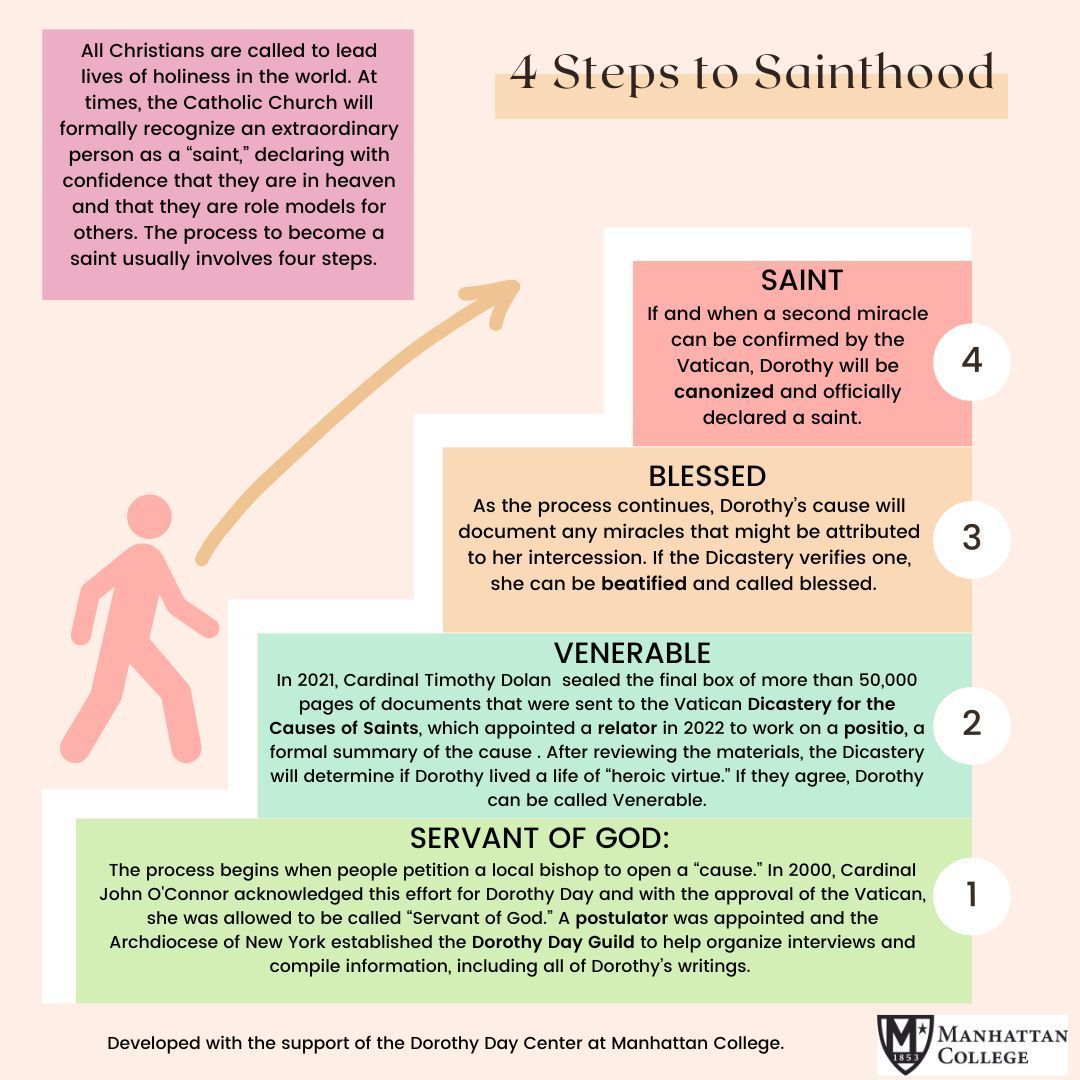
Our Guild has benefited from years of guidance and support from our postulator in Rome, Dr. Waldery Hilgeman, and he graciously shared a lot of background information on this stage in the process when he met with our steering committee last month. Two years ago, on December 8th, 2021, the diocesan phase of the canonization process formally concluded when the boxes of material evidencing Dorothy’s holiness were sealed at a celebratory mass at St. Patrick’s Cathedral in New York and sent to the Vatican. Over the summer, we learned that the Dicastery for the Causes of Saints officials had completed the first review of the materials we sent them and had given their stamp of approval on the work completed during the diocesan phase of the canonization process– a significant hurdle to pass, indicating that the transcriptions, testimonies, and eye-witness interviews had all been conducted according to the juridical norms of the Dicastery. Since then, we have been eagerly awaiting news that the relator, the person appointed by the Dicastery to provide a thorough and objective report on the life, virtues, and reputation of holiness of the individual being considered for canonization, has been appointed.
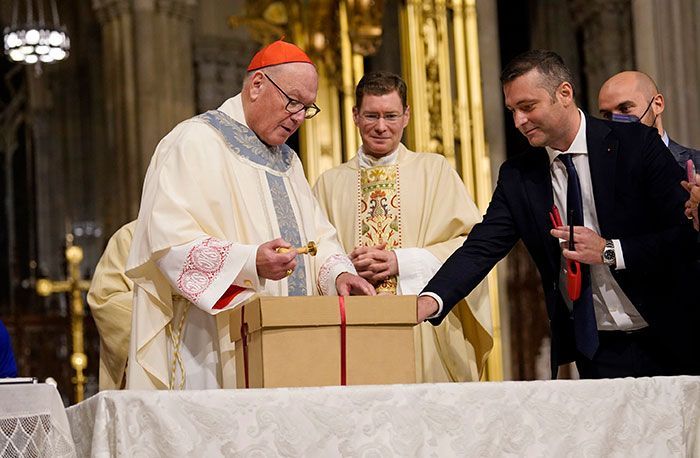
The Role of the Relator:
The relator has a few key duties, all of which contribute to ensuring that the process of canonization is thorough, fair, and in accordance with the established procedures of the Dicastery. His primary work is in the compilation of the positio, which is a comprehensive, detailed account of Dorothy’s life, virtues and holiness. As our postulator, Dr. Hilgeman and his team will continue to work closely with Monsignor Tagliaferri in the preparation of the positio. This document serves as the basis for further discussion and evaluation with the larger body of the Dicastery. In order to put this document together, the relator is responsible for analyzing the results of the diocesan inquiry, which we concluded two years ago when we sent our boxes of evidence to Rome. Right now, this is what Monsignor Tagliaferri is working on for our cause.
During our advisory committee meeting in June, Dr. Hilgeman shared with us some of his hopes for the type of person who would be appointed as our relator for Dorothy’s process. Dr. Hilgeman told us that finding the right person for the job sometimes takes months because the saints are so diverse in their particular expressions of sanctity, their historical contexts, and their linguistic and cultural backgrounds. The relator’s contribution to this stage of the canonization process is in ensuring the accuracy of the factual narrative of the candidate’s life and accuracy in the historical details of the candidate’s time and place. In our case, we needed a relator who was able to write and conduct research in English, and who was familiar with the nuances of American culture and the social, economic, and political landscape of the mid-twentieth century. In short, we needed someone who would understand Dorothy, and as you know, she is not an easy figure to categorize! We are so pleased with the selection of Monsignor Tagliaferri, who has worked on a number of other American sainthood causes that are dear to many of our members, including two of the Saintly Six Black American “Saints in Waiting,” Venerable Augustus Tolton and Servant of God Julia Greeley. All of us at the Guild feel that Dorothy’s cause is in capable and devoted hands.
Much of the relator’s work involves research, so if necessary he may request further collection of historical documents, testimonies and any other relevant evidence. Monsignor Tagliaferri will also work closely with theologians, historians, and other experts to ensure that the positio is accurate, thorough, and in accordance with the theological and canonical requirements for canonization.
As a journalist whose career spanned six decades and a lifelong diarist, Dorothy’s body of written work is extensive, and because of this, the compilation of her positio may take longer than that of a less-literary saint. Many of us who are eager for her canonization feel blessed by the level of insight that this quantity of writing provides us into her life and legacy while occasionally wishing that she had been briefer in print! Eventually, upon completion, Monsignor Tagliferri will present Dorothy’s positio to the theological and historical consultors and the members of the Dicastery for the Causes of Saints, and make a clear and reasoned case for her canonization.
Monsignor Tagliaferri will participate in the discussions and deliberations of the Congregation, offering insights and responses to questions raised by other members and giving his recommendation for her beatification and eventual canonization. Once the positio has been accepted by the Dicastery, Pope Francis may declare Dorothy “Venerable,” the next official stage in the canonization process.

Collaboration with our Postulator:
As the postulator for Dorothy’s cause, Dr. Hilgeman is our advocate in Rome. We’ve used the phrase “canonization process” in Guild newsletters and publications; declaring someone to be a saint is a ‘process' in the legal sense of the word. Dr. Hilgeman is a canon lawyer, and his close collaboration with Monsignor Tagliaferri ensures the entire process aligns with the established legal and canonical requirements for beatification and eventually canonization. While the relator’s role is focused on historical and factual details of the candidate’s life, Dr. Hilgeman’s task is to present a compelling case for Dorothy’s sanctity, often focusing on the theological and pastoral dimensions of her witness to the Gospel. Throughout this stage of the canonization process, Dr. Hilgeman and Monsignor Tagliaferri will collaborate on research using the evidence gathered during the diocesan phase. As our advocate, Dr. Hilgeman will also work closely with the Dorothy Day Guild, gathering accounts of the widespread devotion to Dorothy among various Catholic communities in the United States and globally, as well as any accounts of special graces and favors you may have received while praying through Dorothy’s intercession. Waldery will continue to engage with the theologians, historians, doctors, and other experts who are charged with evaluating Dorothy’s case in order to provide a well-rounded perspective on her life, virtues, and reputation for holiness and will stay in close contact with the Dicastery, offering support and clarification to those who will be in charge of making recommendations on Dorothy’s cause in the future.
What Comes Next?
While we don’t know exactly how long it will take for Monsignor Tagliaferri, Dr. Hilgeman, and their team to complete the positio, the stage of the canonization process that we are in now, from the beginning of the Roman phase of the cause to the moment where the candidate is declared Venerable, typically takes between two and five years. Since the Roman phase began when the evidence of Dorothy’s sanctity was delivered to the Vatican two years ago, we hope that this moment is coming within the next three years. Once the positio has been officially submitted to the Dicastery, it undergoes an examination by nine theologians who vote on whether or not Dorothy lived a heroic life. According to the USCCB, “If the majority of the theologians are in favor, the cause is passed on for examination by cardinals and bishops who are members of the [Dicastery].” If these cardinals and bishops vote yes, the head of the Dicastery presents the results to Pope Francis, who can then give his approval and authorize the Dicastery to draft a decree declaring Dorothy Venerable.
Here’s how you can help: keep praying! Many thanks to those who have joined us in our
novena, which began on the anniversary of Dorothy’s death on November 29th, and concluded today. We need your prayers at this stage of the cause more than ever. Pray for Dorothy’s canonization, and especially pray through her intercession, asking her to bring your needs and the needs of our world to Christ. It is a HUGE help to Dr. Hilgeman, Monsignor Tagliaferri, and their team to hear about any special graces or favors you receive by praying with Dorothy. We did in fact receive a particular request from a friend of the Guild this morning, asking for prayers for Shelly, a relative who lives in Minnesota, and who deals with a debilitating chronic illness for which doctors have so far been unable to find treatment. Please join us in praying for healing and wisdom for Shelly and her family. If you have similar requests that you would like to share with our Guild network, please let us know how we can best be praying for you.
Many, many of you have reported receiving spiritual assistance and increased faith or other forms of help such as finding good employment and restoring broken relationships when you have prayed to Dorothy. You can
share those stories with the Guild on our website. It is out of these reports of graces and favors received that we hope that eventually a miracle will be discovered, opening the way for Dorothy’s beatification.
A few words from Dorothy:
Today, the feast of the Immaculate Conception, marks the anniversary of the day in 1932 that Dorothy prayed to find her vocation. After covering the hunger march, a Communist-organized demonstration in support of justice for the poor and working classes during the depths of the Great Depression, Dorothy made her way to the national shrine (now the national cathedral) and asked God to help her use her gifts as an organizer and movement journalist to serve her brothers and sisters. Peter Maurin was the living answer to that prayer, and from that meeting, the Catholic Worker movement was born. In
The Long Loneliness, Dorothy wrote:
“The years have passed, and most of the legislation called for by those workers is on the books now. I wonder how many realize just how much they owe the hunger marchers, who endured fast and cold, who were like the Son of Man, when He said, ‘The foxes have holes, and the birds of the air have nests, but the Son of man hath not where to lay his head.’
When the demonstration was over and I had finished writing my story, I went to the national shrine at the Catholic University on the feast of the Immaculate Conception. There I offered up a special prayer, a prayer which came with tears and with anguish, that some way would open up for me to use what talents I possessed for my fellow workers, for the poor.”
My life has been irrevocably changed as a result of Dorothy’s prayer ninety-one years ago today, and I know this is true for many of you as well. Today, let’s give thanks to God together for Dorothy’s life and witness and pray that she will continue to help us offer our gifts for the needs of the poor and to discover our own paths towards holiness!
In peace,
Dr. Casey Mullaney, on behalf of the Dorothy Day Guild
Share this post


